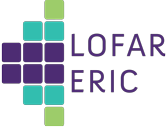Description
Low-frequency (~< 300 MHz) observations of impulsive transients allow precise measurements of propagation effects (dispersion, scatter-broadening and Faraday rotation) that probe the local environments of the sources that produce these transients. The detection of bursts from repeating fast radio burst (FRB) sources 20180916B and 20181030A with the LOFAR telescope indeed has put the tightest constraints on free-free absorption local to these two sources. It has also revealed a chromaticity in the periodic activity of FRB 20180916B. Moreover, one burst extending down to the bottom of the LOFAR High-Band Antennas (HBA) at 110 MHz suggests that FRB emission is detectable at even lower frequencies. LOFAR 2.0 will have a much-improved correlator network bandwidth that allows for the multi-casting of station data and the production of order thousand tied-array beams for rapid sky mapping. We have been developing the EuroFlash survey, that will piggyback on all LOFAR observations and independently beamform and search for transients on a dedicated compute cluster. A combination of targeted and untargeted searches will run 24/7 and year-round and will greatly increase the yield of fast transients at low frequencies. It will reveal any frequency-evolution in the population of FRBs through comparison with the CHIME/FRB survey and surveys at L-band, and it may well uncover a completely new class of fast transients that only manifests at low frequencies. Inclusion of the international stations with baselines up to 1000 km will allow for ~arcsecond localization of bursts. In this talk, I will review low-frequency observations of fast transients and give an update of the commissioning of EuroFlash on LOFAR 2.0.

